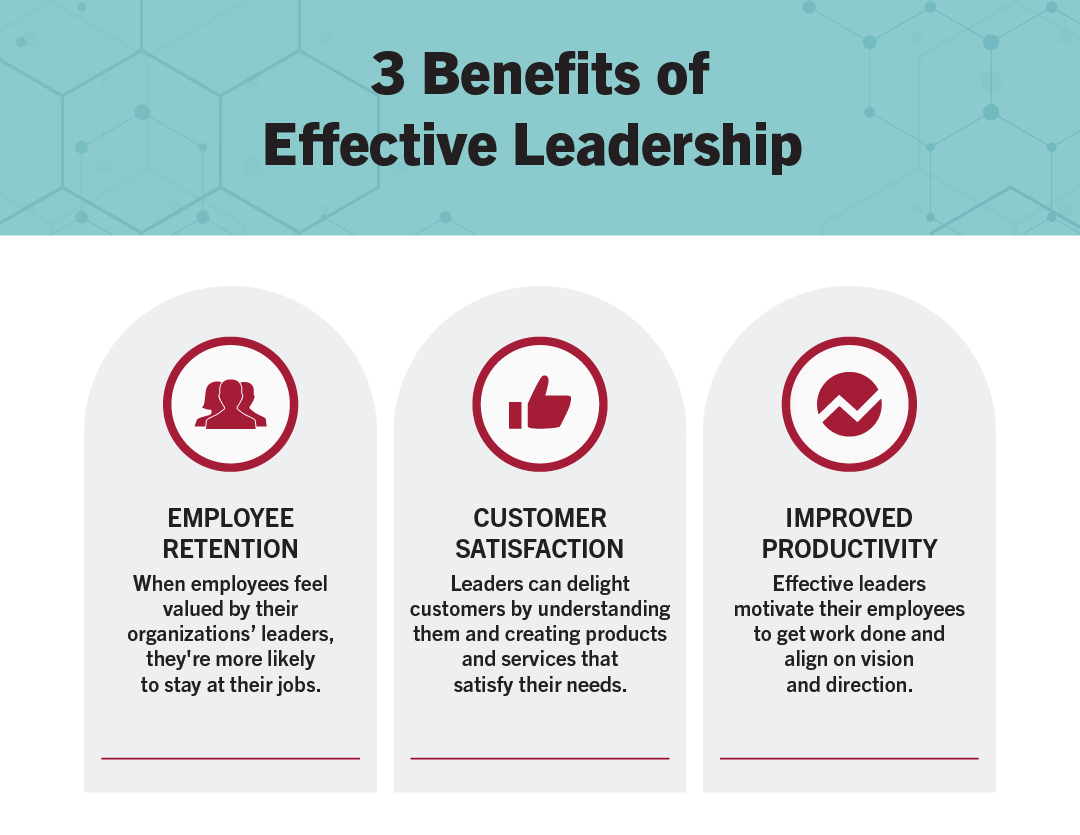Top 10 Leadership Qualities That Make a Great Leader
Table of Contents

Have you ever thought about what differentiates great leaders from everyone else? Leadership is not about a title or position; leadership is inspiring others, enabling others to grow, and handling challenges with the right strategies.
Whether you’re an executive, you manage a team, or you are an aspiring leader, appreciating the qualities of an effective leader can be transformational to your journey. This is because our world is complex and fast-paced, and the need for strong leadership has never been greater. Impressive leaders do not only deliver results, but they also create a culture where people feel valued and inspired to contribute. In addition, great leaders have a special blend of skills and personal attributes that allow them to converse with their teams at a deeper level.
In this blog, we will highlight ten meaningful leadership qualities that contribute to effective leadership. We will also discuss each attribute and its significance. This blog will help you learn how to lead with integrity. Let’s dive into the conversation and learn what outstanding leadership is about.
*library.south.edu
10 Essential Leadership Qualities You Can't Miss
Let’s have a look at what makes a great leader in today’s modern world:
1. Vision
Every great leader begins with an inspiring vision. The challenge is not just knowing where you want to go, but also being able to communicate that vision. A leader with a clear vision illustrates the future in a way that inspires your people to work toward a common goal.
Having a clear vision serves as an effective guide for decision-making and prioritizing your action items. When team members know there is a big picture, they are more likely to be motivated and engaged in the task. A clear vision resonates with the sense that they are connected purposefully to something larger in the moment that incites their best participation.
- Leaders communicate vision effectively through storytelling rather than just listing facts or concepts.
- They use relatable examples and imagery to help others visualize and connect with the vision.
- To develop a compelling vision, leaders can:
- Identify key aspects of the vision.
- Understand the team’s perspectives.
- Ask relevant questions to refine the vision.
- Engage the team by seeking their feedback and contributions.
- This approach fosters a sense of ownership among team members.
- It encourages collaboration and commitment to the shared journey.
2. Integrity
Integrity is one of the most important leadership qualities for a successful leader. An in-depth look shows that a great leader is honest, transparent, and ethical. This integrity creates trust among group members, which can foster a culture of accountability.
When leaders display integrity in their actions, they provide a standard for the team to emulate, building the idea that maintaining honesty is important to the group as a whole and that integrity is expected from every member of the team. Trust is fundamental to collaboration and innovation. When trust is absent, team dynamics can suffer. When a leader embraces integrity, it creates an environment in which people feel safe to display honesty to one another and to share ideas when they recognize challenges. An environment of integrity encourages people to communicate openly and collaborate.
- Leaders can enhance their integrity by practicing self-reflection.
- Seeking honest feedback from their team helps reinforce accountability.
- Transparency is crucial—leaders should openly share their decisions and reasoning.
- Admitting mistakes and taking ownership fosters trust and sets an example.
3. Empathy
Empathy is the act of recognizing and sympathizing with the feelings of fellow individuals. Exceptional leaders know that their team members are humans with different lives and emotions. These insights enable leaders to develop a personal connection that can lead to healthy relationships, in turn creating a stronger group dynamic.
Empathetic leaders can better understand the complexities and motivations of their teams. They can then respond with compassion and awareness. This leads to a culture where members feel valued and understood as complete people. All of this leads to a higher morale and a deeper loyalty toward the organization, ultimately leading to greater performance.
- Leaders develop empathy by actively and intentionally listening.
- They must make an effort to genuinely understand and relate to their team members’ perspectives.
- Creating an open environment encourages discussions and the sharing of thoughts and concerns.
- This approach helps build stronger team relationships and trust.
4. Adaptability
In today’s constantly evolving environment, adaptability is another one of the best leadership qualities. Great leaders are flexible and open to change, enabling them to thrive in uncertainty. They welcome new ideas and processes while also empowering innovators on their team. Adaptable leaders can respond to problems and seize opportunities when they arise.
This will help organizations remain relevant and competitive in a volatile environment. Additionally, it demonstrates to a leader’s team or organization the importance of embracing change rather than resisting it.
- Leaders develop adaptability by staying updated on industry changes and new technologies.
- Encouraging team experimentation helps uncover new insights and advancements.
- Viewing failure as a learning opportunity promotes growth and resilience.
- Innovation and agility within the company are fostered by keeping an open mind to new ideas.
5. Communication Skills
Effective communication is a fundamental quality of great leaders. It involves not just speaking clearly but also listening actively and facilitating meaningful conversations. A leader who communicates eloquently can inspire, inform, and engage their team.
Clear communication reduces misunderstandings and fosters collaboration. It ensures that everyone is on the same page and working toward the same goals. Moreover, it empowers team members to voice their ideas and concerns, creating a more inclusive environment.
- Leaders can improve communication skills by practicing active listening.
- Encouraging feedback helps create a two-way dialogue.
- Being mindful of body language and tone enhances message delivery.
6. Decisiveness
Great leaders are decisive. They can assess data, select options, and make swift decisions, even under difficult circumstances. This feature gives the leader’s team confidence and drive to keep making progress on issues or projects. Having the ability to be decisive allows a team (or organization) to avoid becoming stagnant and putting progress on hold— a state that is often difficult to recover from.
When a leader is decisive, the team feels involved and secure and can remain focused. This level of decisiveness is critical for high-stakes and fast-moving issues, as the longer the team debates or takes time to consider options, the greater the chances are that the opportunity or option will be eliminated.
- Leaders enhance decisiveness by efficiently gathering options and relevant information.
- Trusting their instincts helps them make timely and confident decisions.
- Involving the team in decision-making fosters greater buy-in and shared responsibility.
- Collaborative decision-making can reduce the leader’s overall burden while strengthening team commitment.
7. Resilience
Resilience is the ability to bounce back from setbacks and maintain a positive outlook. Great leaders face challenges head-on and inspire their teams to persevere in the face of adversity. This quality is vital in navigating the ups and downs of leadership.
In any leadership role, obstacles are inevitable. A resilient leader can navigate difficulties without losing sight of their goals. This quality fosters a culture of perseverance within the team, encouraging members to tackle challenges rather than shy away from them.
- Leaders build resilience by cultivating a growth mindset.
- Viewing challenges as opportunities enhances personal and team strength.
- Encouraging team members to share experiences fosters a supportive environment.
- Learning from obstacles together reinforces adaptability and perseverance.
8. Accountability
Accountability is the ability to take responsibility for your actions and decisions. The best leaders hold themselves and their teams accountable, which helps to create a culture of ownership and commitment in the workplace. It also helps establish trust and ensure that everyone is working toward the organization’s objectives.
When leaders exhibit accountability, they set the tone for the entire team. Others are much more likely to display ownership toward their work and contribute to the success of the collective group. Doing so also establishes trust, knowing that they can rely on their leaders to honor commitments and promises. To demonstrate accountability as a leader, you must clearly define expectations, responsibilities, and the scope of work for yourself as well as your team.
9. Inspirational
Effective leaders inspire their teams to accomplish greater things. They energize and uplift others to pursue their interests and perform their best. This aspect is usually what differentiates a good leader from a great one. Inspiration leads to motivation and engagement. When inspired, team members are more likely to exceed expectations in their work.
This leads to an energetic and enthusiastic workplace culture that achieves exceptional results. To become an inspiring leader, you must share your passion and enthusiasm with your team. In order to foster this atmosphere, make sure you regularly acknowledge both individual and group accomplishments.
10. Humility
Humility is recognizing limits and giving credit to others. Great leaders don’t think they are right all the time; rather, they recognize the importance of working together and utilize various strengths in their team. When humility is present, no one feels undermined by others due to their level of respect or influence.
The leader will share or encourage their teams to share their input and opinions, leading to better ideas, solutions, and potential bonds for team development. If you want to improve your humility, you would want to focus on listening intently to others and asking for feedback when necessary.
Recognizing or validating the contributions of your team and celebrating the successes of team-based projects is a wonderful way to reinforce the team approach. And being willing to admit your mistakes or learn from them shows that growth will always be part of the journey.

*online.hbs.edu
Conclusion
Great leadership is a blend of many qualities that inspire, motivate, and guide individuals and teams toward success. By cultivating vision, integrity, empathy, adaptability, communication skills, decisiveness, resilience, accountability, inspiration, and humility, you can develop into a leader who makes a lasting impact.
In the world of leadership, your influence can resonate far beyond your immediate team. By embodying these qualities, you can create a positive ripple effect that transforms your organization and inspires those around you. So, are you ready to become the best leader in your organisation? Well, with confidence and passion, you can lead your team to new heights!
Frequently Asked Questions
What are some examples of leadership qualities?
Some examples of leadership qualities include vision, integrity, empathy, adaptability, communication skills, decisiveness, resilience, accountability, inspiration, and humility. These traits help leaders effectively guide and motivate their teams.
Why is integrity important in leadership?
Integrity is crucial in leadership because it builds trust among team members, fosters accountability, and sets a standard for ethical behavior. When leaders act with integrity, they create a safe environment where team members feel encouraged to communicate openly and work collaboratively.
How can I develop my leadership qualities?
Developing leadership qualities involves self-reflection, seeking feedback, and actively practicing your skills. Engaging in continuous learning, embracing challenges, and focusing on building relationships with your team can significantly enhance your leadership abilities.
What differentiates a good leader from a great leader?
The key difference lies in the ability to inspire and motivate others. While a good leader may manage tasks effectively, a great leader empowers their team, creates a positive culture, and drives individuals to achieve their best while sharing a compelling vision for the future.















